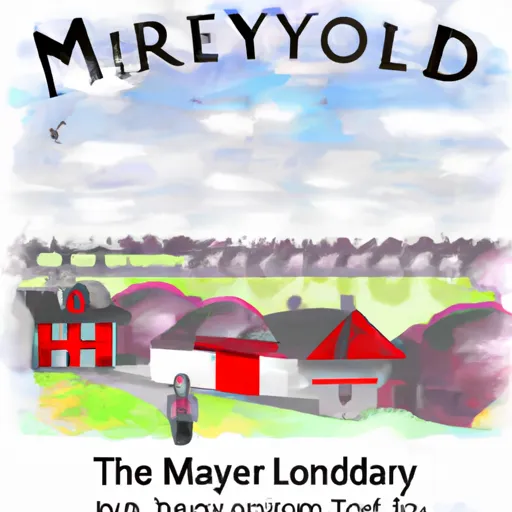-
 Snoflo Premium
Snoflo Premium
Get unlimited access to all our content
With no Ad interruptions! - Start Your Free Trial Login with existing account
Welcome
Eden Index
Climate
8.3
•
Recreation
3.1
•
Community
•
Safeguard
4.4/10

Welcome, Maryland is a small town located in southern Maryland, United States. It experiences a humid subtropical climate, characterized by hot, humid summers and mild winters. Summers are generally sunny with temperatures often exceeding 90°F (32°C), while winters are mild with average temperatures ranging from 30°F (-1°C) to 50°F (10°C). Precipitation is fairly evenly distributed throughout the year, with an annual average of around 40 inches (1016 mm).
The hydrology constituents of Welcome are shaped by the nearby Patuxent River, which flows through the town. The river provides a vital water source for the community and supports various aquatic species. The river also offers recreational opportunities such as fishing, boating, and kayaking.
In addition to the Patuxent River, Welcome is surrounded by picturesque landscapes that offer opportunities for outdoor activities. The town is nestled in the heart of Charles County, which boasts numerous parks, nature trails, and wildlife sanctuaries. Visitors can explore the Mattawoman Creek, a designated Maryland Natural Environmental Area, renowned for its diverse ecosystem and prime birdwatching opportunities. Moreover, the neighboring Cedarville State Forest offers hiking trails, camping grounds, and horseback riding trails, allowing residents and visitors to enjoy the beauty of the natural surroundings.
In conclusion, Welcome, Maryland experiences a humid subtropical climate, with hot summers and mild winters. Its hydrology constituents are influenced by the nearby Patuxent River, which supports various recreational activities. The town is surrounded by beautiful landscapes, providing ample opportunities for outdoor recreation such as fishing, boating, hiking, and birdwatching.
What is the Eden Index?
The Snoflo Eden Index serves as a comprehensive rating system for regions, evaluating their desirability through a holistic assessment of climate health, outdoor recreation opportunities, and natural disaster risk, acknowledging the profound impact of these factors on livability and well-being.
Climate Health Indicator (CHI): 8.3
Welcome receives approximately
1115mm of rain per year,
with humidity levels near 84%
and air temperatures averaging around
14°C.
Welcome has a plant hardyness factor of
7, meaning
plants and agriculture in this region tend to thrive during the non-winter months.
By considering the ideal temperature range, reliable water supplies, clean air, and stable seasonal rain or snowpacks, the Climate Health Indicator (CHI) underscores the significance of a healthy climate as the foundation for quality living.
A healthy climate is paramount for ensuring a high quality of life and livability in a region, fostering both physical well-being and environmental harmony. This can be characterized by ideal temperatures, reliable access to water supplies, clean air, and consistent seasonal rain or snowpacks.
Weather Forecast
Streamflow Conditions
Potomac
Area Rivers
Potomac
Snowpack Depths
Potomac
Reservoir Storage Capacity
Potomac
Groundwater Levels
Recreational Opportunity Index (ROI): 3.1
The Recreational Opportunity Index (ROI) recognizes the value of outdoor recreational options, such as parks, hiking trails, camping sites, and fishing spots, while acknowledging that climate plays a pivotal role in ensuring the comfort and consistency of these experiences.
Access to outdoor recreational opportunities, encompassing activities such as parks, hiking, camping, and fishing, is crucial for overall well-being, and the climate plays a pivotal role in enabling and enhancing these experiences, ensuring that individuals can engage in nature-based activities comfortably and consistently.
Camping Areas
| Campground | Campsites | Reservations | Toilets | Showers | Elevation |
|---|---|---|---|---|---|
| Pohick Bay Regional Park | 150 | 126 ft | |||
| Smallwood State Park | 15 | 16 ft | |||
| Louise F. Cosca Regional Park | 23 | 223 ft | |||
| Andrews AFB Military | None | 269 ft | |||
| Burke Lake Park | None | 327 ft | |||
| Little Bennett Regional Park | 90 | 644 ft | |||
| Greenbelt Park | 175 | 121 ft | |||
| Fort Belvoir Travel and RV Camp | 52 | 132 ft |
Nearby Ski Areas
Catastrophe Safeguard Index (CSI):
The Catastrophe Safeguard Index (CSI) recognizes that natural disaster risk, encompassing floods, fires, hurricanes, and tornadoes, can drastically affect safety and the overall appeal of an area.
The level of natural disaster risk in a region significantly affects safety and the overall livability, with climate change amplifying these risks by potentially increasing the frequency and intensity of events like floods, fires, hurricanes, and tornadoes, thereby posing substantial challenges to community resilience and well-being.
Community Resilience Indicator (CRI):
The Community Resilience Indicator (CRI) recognizes that education, healthcare, and socioeconomics are crucial to the well-being of a region. The CRI acknowledges the profound impact of these elements on residents' overall quality of life. By evaluating educational resources, healthcare accessibility, and economic inclusivity, the index captures the essential aspects that contribute to a thriving community, fostering resident satisfaction, equity, and social cohesion.

